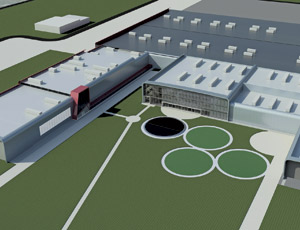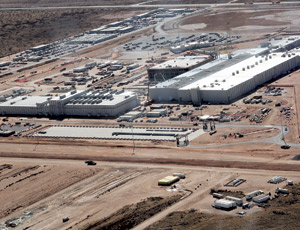The nation’s second new nuclear enrichment facility could be under construction before the end of the year, while a third languishes in need of a Dept. of Energy loan guarantee. The new facilities—one in Idaho, one in New Mexico and a third in Ohio—are needed to supply existing nuclear powerplants in the United States and could be expanded to supply new ones.


Paris-based Areva on Feb. 11 signed a two-phase contract with San Francisco-based URS Corp. to build a nuclear enrichment facility, called Eagle Rock, on a 4,000-acre greenfield site in Idaho that used to be a potato farm. Four days later, Areva learned that the Nuclear Regulatory Commission’s final environmental impact statement declared the facility’s impacts would be small. NRC recommended license approval.
Following hearings scheduled for June, Areva hopes to get NRC’s go-ahead in August, five months ahead of schedule, and begin construction immediately, said Sam Shakir, president of Areva Enrichment Services. “We [hope] to hit the ground running and be able to execute a project on time and on budget,” he said.
The URS contract calls for some site prep work to begin even before the NRC issues a license.
After licensing, URS will provide procurement, construction and management services. Areva and The Shaw Group, headquartered in Baton Rouge, are responsible for engineering.
In 2014, the plant is expected to produce enriched uranium for production of nuclear energy. Construction will continue through 2017. The plant will be built in modules so that a structure containing a cascade, which enriches the uranium, can be operating while other modules are added.
Areva has requested a license from the NRC that will allow the company to continue to build beyond 2017, essentially doubling the capacity of the plant by 2021 if market conditions are right, Shakir said. The expanded plant’s full cost would be $4.5 billion.
URS also performed some construction and construction management services for U.K.-based Urenco Ltd.’s enrichment facility that it is building in Eunice, N.M. That $3-billion facility began producing enriched uranium last summer, said Don Johnson, a company spokesman. Two of 48 planned cascades are in operation, while other modules are under construction. While URS and The Shaw Group both worked on the plant, Urenco has taken over all design and contracting work, Johnson said.
Urenco did not request a Dept. of Energy loan guarantee for its project, but Areva did and will get a $2-billion loan guarantee for the Eagle Rock plant.
A third plant, under construction by Bethesda, Md.-based USEC Inc., Piketon, Ohio, stalled when in 2009 DOE rejected its application for a loan guarantee, saying there were problems with the technology the plant intended to use. Urenco and Areva jointly own the technology, which has been used for years in Europe. USEC also developed its own gas centrifuge technology.
USEC has revised and submitted its application and received DOE’s draft term sheet for the loan, but negotiations are still under way, said Paul Jacobsen, a spokesman for USEC.
When DOE’s loan guarantee fell through, sitework stopped. Irving, Texas-based Fluor Corp., which has a $1-billion engineering, procurement and construction contract, still expects to be the contractor if the loan comes through, Jacobsen said.
To help the project, Toshiba Corp. and Babcock & Wilcox together invested $200 million. B&W has a $500-million contract with USEC to manufacture the plant’s centrifuge technology.

Post a comment to this article
Report Abusive Comment